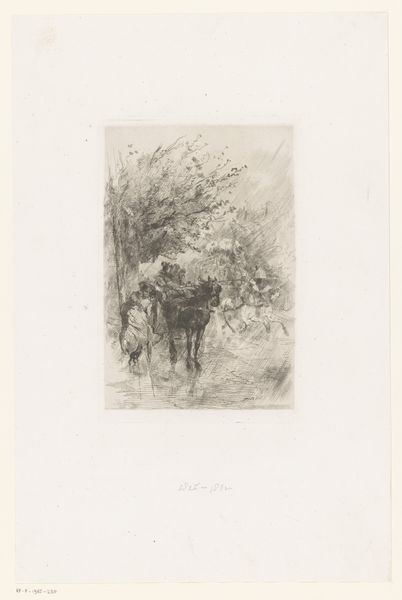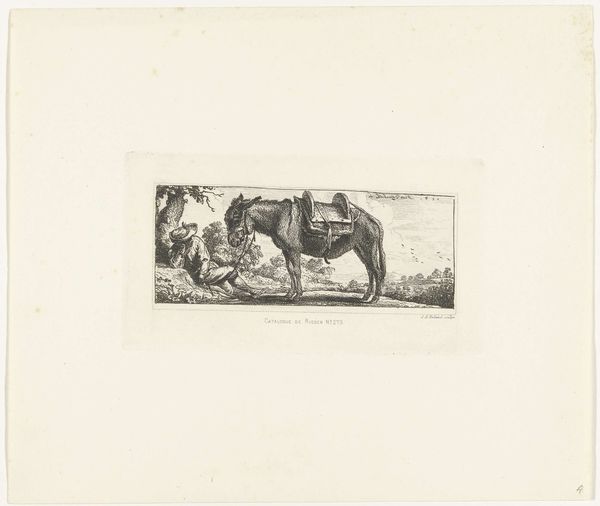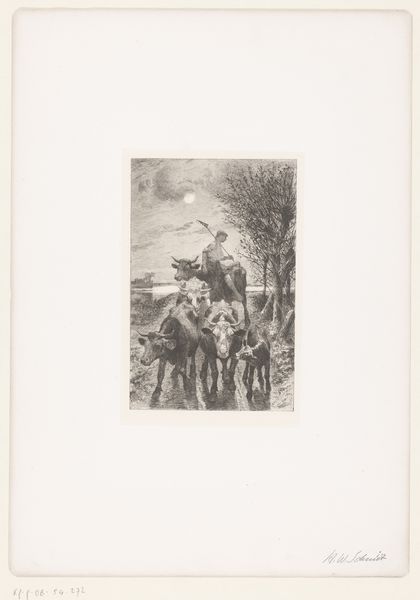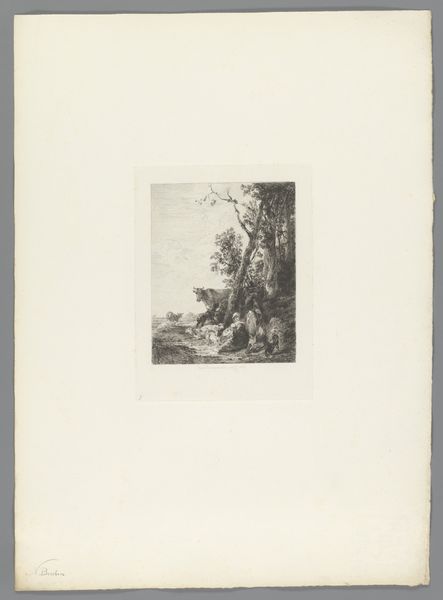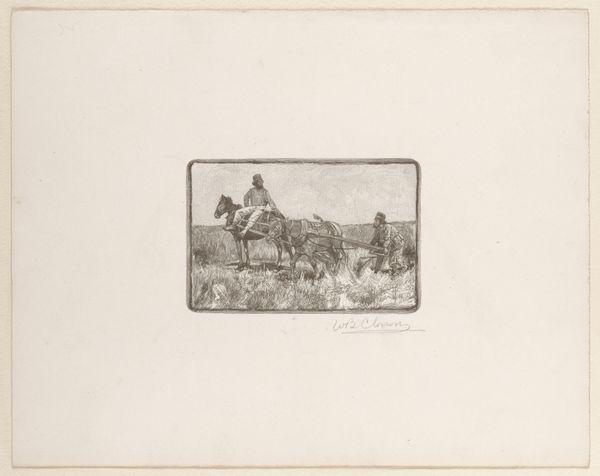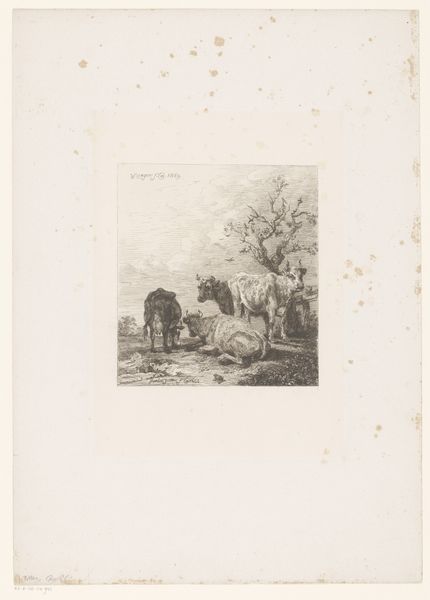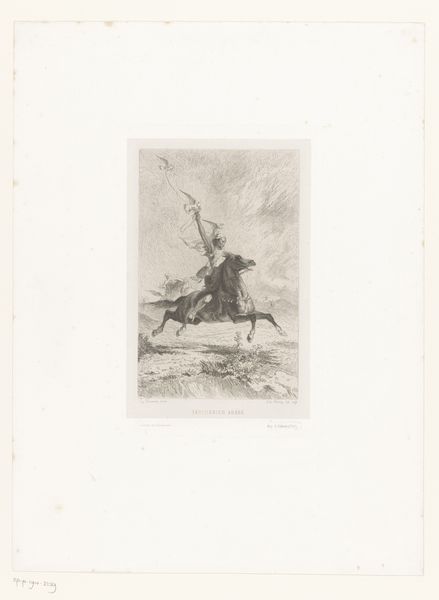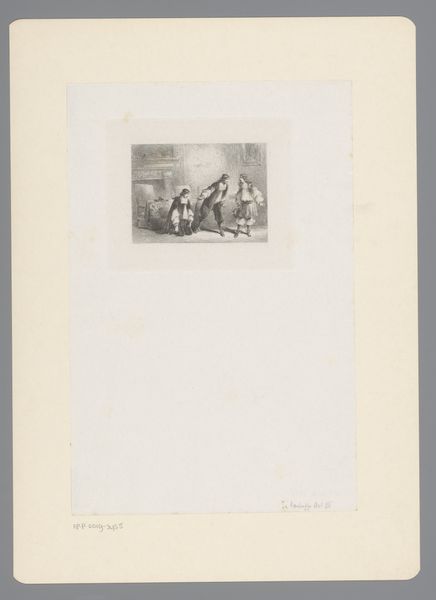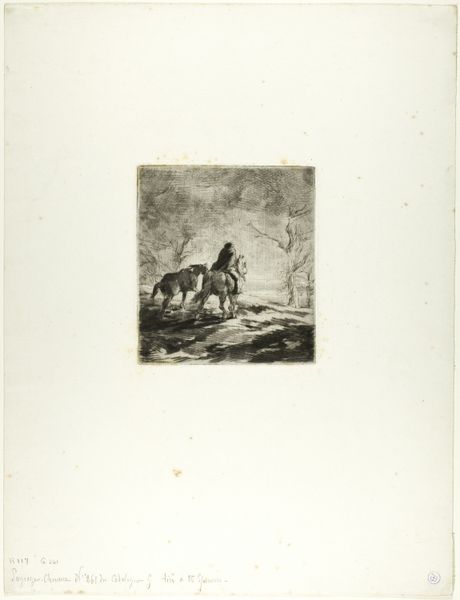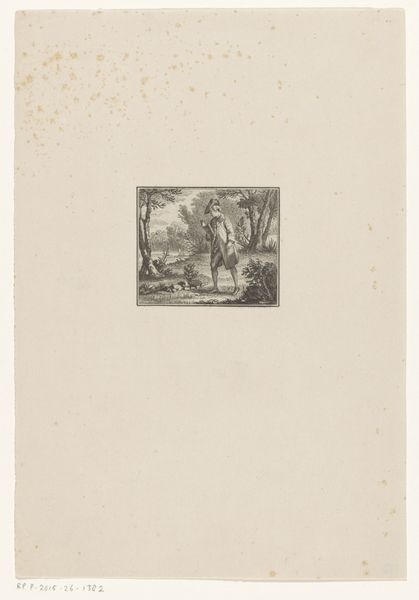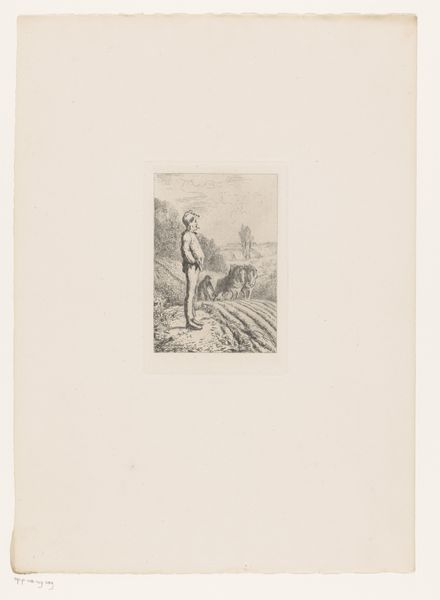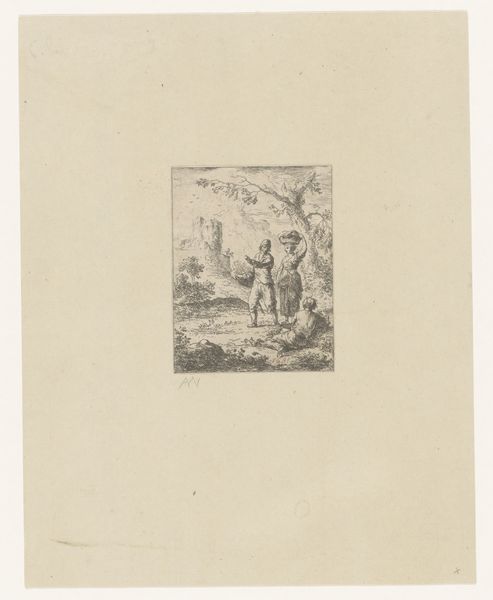
Dimensions: height 123 mm, width 98 mm
Copyright: Rijks Museum: Open Domain
Editor: So, here we have "Landscape with a Soldier on Horseback near a Woman with Fruit Basket," a print by Polynice Auguste Viette from 1852. It's small, and monochromatic, but I get this strong sense of romanticism and perhaps a touch of genre painting as well. What strikes you most when you examine its intrinsic qualities? Curator: The balanced interplay of light and shadow, achieved through the fine lines of the engraving, is paramount. Notice how Viette guides the eye through the composition by contrasting the darker foreground—the soldier and woman—with the softer, more ethereal background. The textural details in the foliage and the woman’s clothing offer visual interest, though it’s a muted drama. Editor: The textures are incredible considering the medium! Is there a reason why you place such an emphasis on this interplay of light and dark? Curator: I am curious about how these elements combine, for instance. How do they create and distribute space? Are you saying that one is of particular value? As to value in the artwork: Value, in this context, not only creates depth, but serves as an ordering principle, leading the eye to perceive the relation of shapes within this composition. How do these forms relate to one another, exactly? Note the almost equilateral form between the women, soldier and horse. The tension is then in its diagonals and their points. What is implied? Where might the soldier's intentions fall, along this unseen line? Editor: Ah, I see! By studying its materiality and structure, we uncover hidden narratives of intention that may or may not exist beyond the confines of its forms. Curator: Precisely. Through disciplined formalism, a dialogue unfolds in our mind of the material possibilities of this seemingly humble print. And a set of choices Viette made to realize his design.
Comments
No comments
Be the first to comment and join the conversation on the ultimate creative platform.
